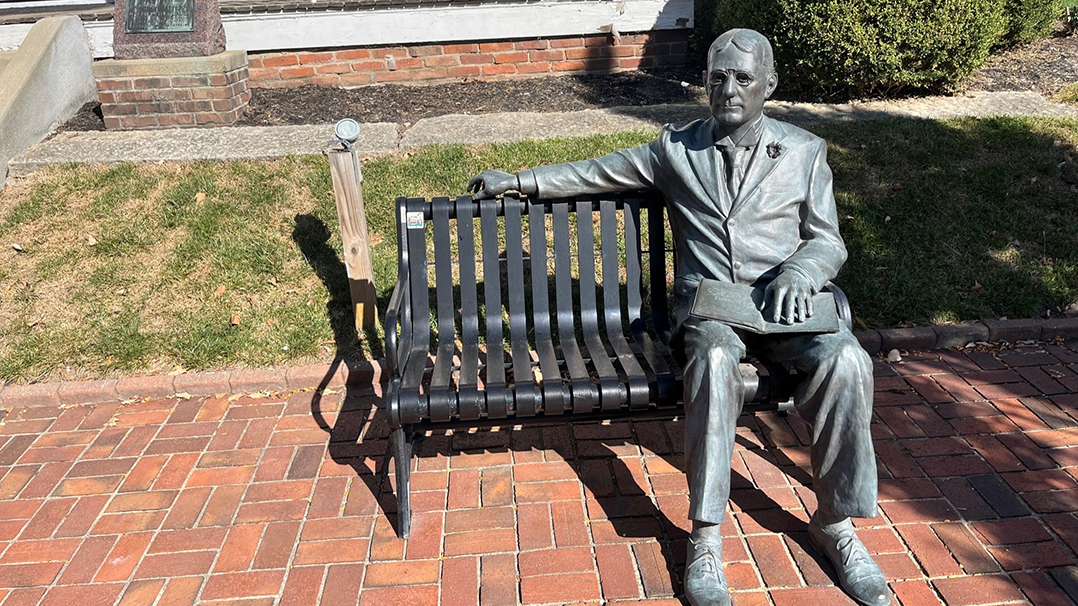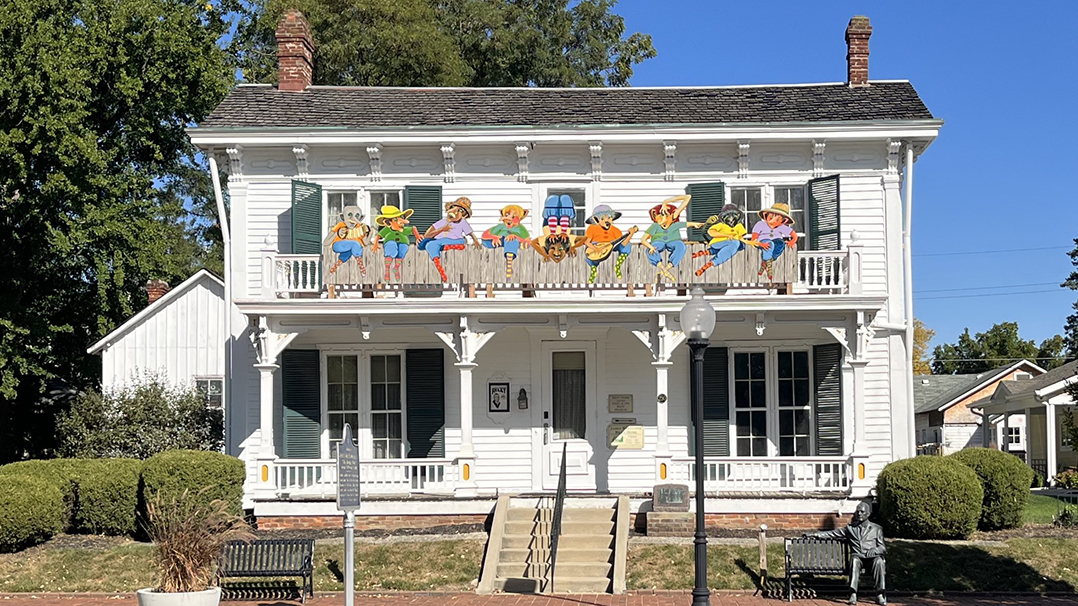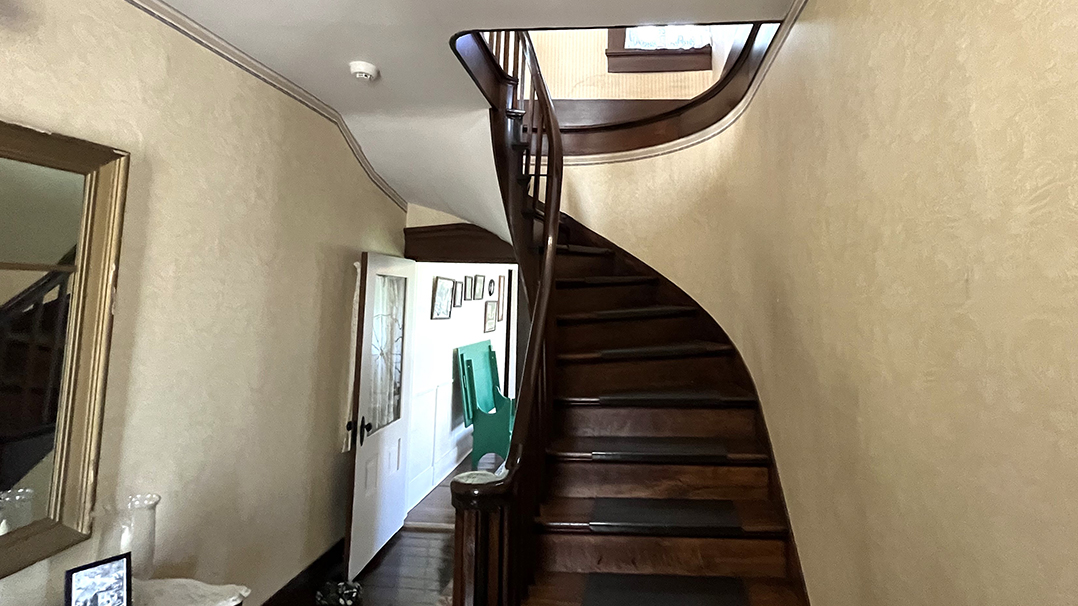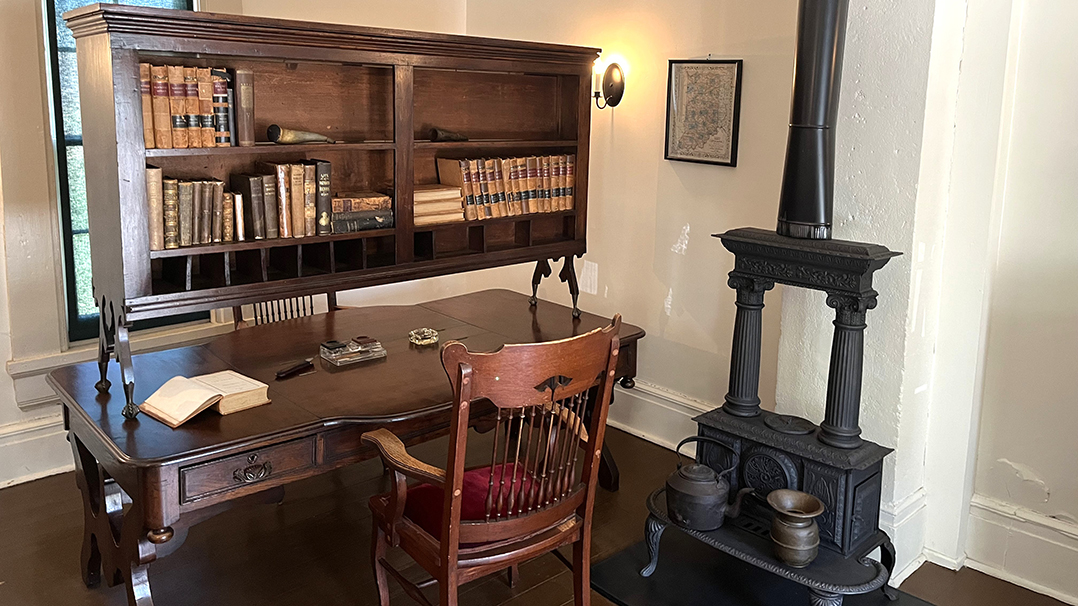In our continuing visits to sites within driving distance of Indianapolis, we stop in Greenfield, Indiana, at the boyhood home of Hoosier poet James Whitcomb Riley.
Reuben Riley. a Greenfield lawyer, was elected to the Indiana legislature in 1848. At the time, he and his wife Elizabeth lived with their two children in a Greenfield cabin along the National Road, now U.S. Highway 40. On October 7, 1849, a third child was born, named in honor of Indiana Gov. James Whitcomb. Riley, a skilled craftsman, soon began building a much larger house next door to accommodate his growing family. The two-story frame house, completed in three years, included a winding stairway, made from materials taken from the cabin. The front porch originally had two doors, one leading to the parlor and one to Reuben’s law office, where he and his partner shared a large desk separated by bookshelves.
During the Civil War, Reuben organized a Greenfield militia. While he was away, Elizabeth received help from 12-year-old Mary Alice Smith, an orphan who inspired “Little Orphant Annie,” one of James Whitcomb Riley’s best-known poems. Other visitors inspired other poems. Reuben Riley returned from the war paralyzed and not able to resume his law practice. Unable to pay expenses, the family sold the house in 1870, a year after 20-year-old James Whitcomb Riley, an indifferent student, had finally completed eighth grade.
James Whitcomb Riley’s poems eventually made him rich and famous. In 1893, earning about $1,000 a week, he bought his boyhood home and allowed his brother John and his wife to live in it while he continued living in Indianapolis. The City of Greenfield purchased the house in 1936 and created the Riley Old Home Society to restore and operate it. Today, the Riley Birthplace and Museum, a National Historic Landmark, is open from April through November.







